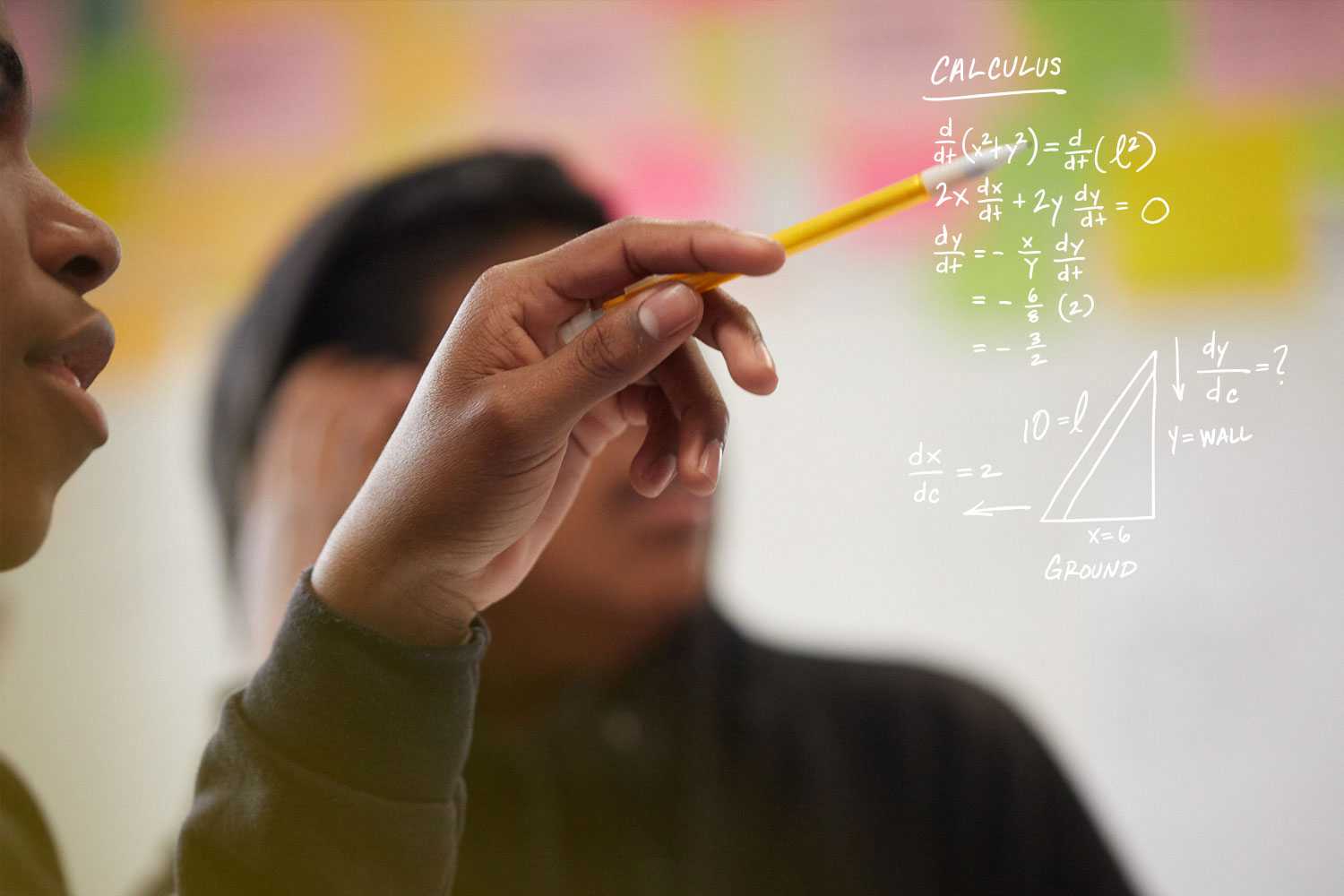3. School improvement is a continuous endeavor.

There’s no such thing as a “good enough” high school.
Fact:
In reviews conducted by AdvancED, 20% to 30% of schools judged to be “high quality” overall still have significant room to improve some aspects of teaching and learning.
Source: Phi Delta Kappan.
How do you spot a culture of continuous improvement in a school? You’ll see it in lots of places: daily or weekly check-ins among teachers, periodic opportunities to analyze information together, regular principal office hours, professional learning that’s never “one-and-done,” ongoing conversations about hiring, budget, and school goals, and more.
You’ll also see it in the presence of students and families at the table when questions are discussed and decisions are made. At Thomas A. Edison Career and Technical High School in New York City, for example, students participate in teacher planning teams—which, according to teachers, was especially helpful for improving remote learning when their school building was closed because of COVID.
In schools with an improvement mindset, educators relentlessly fine-tune their school design to ensure equity, expand opportunity, and improve outcomes for all students. Experts in improvement science at the Carnegie Foundation for the Advancement of Teaching recommend three steps:
- Look for patterns and identify problems. For example, a high school implementing personalized, competency-based learning might notice that a particular group of students consistently lags behind in mastering learning goals.
- Diagnose the root cause of the problem. It takes trust and frank dialogue to avoid two common improvement traps. The first is “solutionitis,” rushing to implement a solution without fully understanding the actual problem you’re trying to solve. The second is fixating on students themselves or their families as the root of a problem, which stymies a school’s ability to act.
- Try, test, and adjust again. Any solution is only as good as how well it works. Effective schools monitor the success of a new strategy or innovation, then decide whether to expand it, adjust it, or dump it altogether based on how well it’s delivering the results it should.
The bottom line is this: a culture of improvement doesn’t happen automatically. It’s designed into a school by many people, starting with the school leader. Will you invest in data systems and technology that deliver actionable information? Build time for learning and reflection into the master schedule? Intentionally hire staff who bring a learner mindset to everything they do? Align your work around both the key elements of your model and your goals for students and graduates? These are design decisions to make now, which can set the stage for a school that’s resilient, adaptable, and ready for the future.
Dive Deep
![students looking at plants]() A Primer for Continuous Improvement
A Primer for Continuous ImprovementThe U.S. Department of Education describes how schools can solve problems using a step-by-step process for continuous improvement.
Read![student smiling]() A Framework for Equity
A Framework for EquityExplore this framework from the Building Equitable Learning Environments (BELE) network for ideas on how multiple measures can help transform a school.
Read![student sitting looking forward]() Data and Design in Balance
Data and Design in BalanceThis report from New Visions for Public Schools describes how effective teams analyze data from a school design perspective to improve outcomes.
Read![student smiling]() Eight Steps to Becoming Datawise
Eight Steps to Becoming DatawiseDataWise, a project at Harvard Graduate School of Education, offers a step-by-step guide to help schools get the most out of data.
Read
Analyze
What processes and routines will you need to build into your school for collecting, reflecting, sharing, and acting on data?
Step 1 – Research
As a group, read this KQED article on how schools can plan and implement continuous improvement. Think about what such an approach might look like given your school’s unique design.
Step 2 – Reflect
As a team, discuss the following questions:
- How will staff members, students, and the school leader be engaged in continuous improvement? How will they be empowered to think boldly and become drivers of change?
- What information should members of the school community be looking at, and at what frequency, to ensure a meaningful cycle of improvement?
- How often and in what ways do adults hear from students about their experiences in learning? Are there ways that students can be in greater or more frequent dialogue with educators, counselors, and other adults to improve school culture and learning?
- How can a culture of improvement keep your school constantly alert for opportunities to expand equity?




